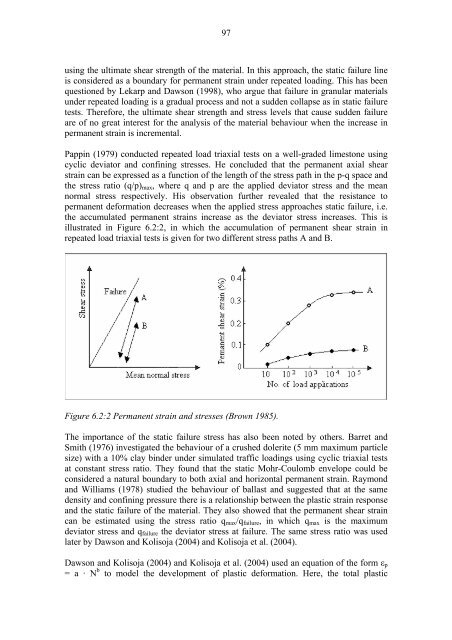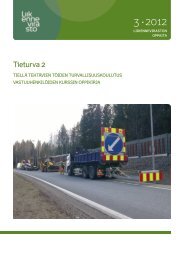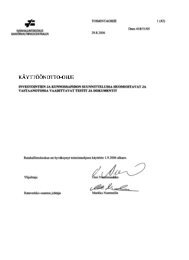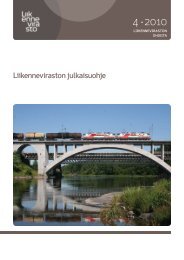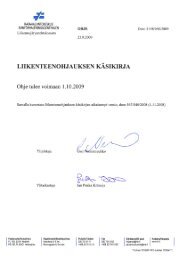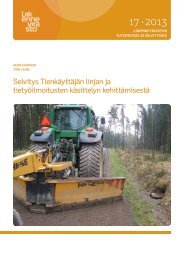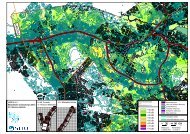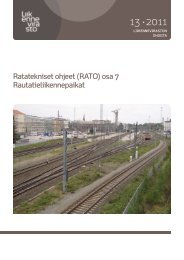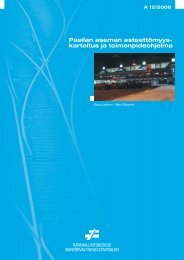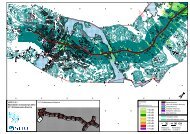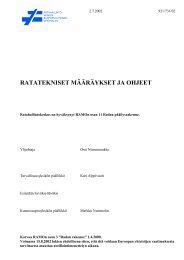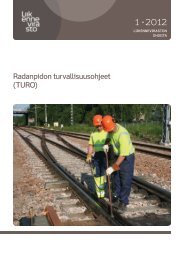Deformation behaviour of railway embankment ... - Liikennevirasto
Deformation behaviour of railway embankment ... - Liikennevirasto
Deformation behaviour of railway embankment ... - Liikennevirasto
You also want an ePaper? Increase the reach of your titles
YUMPU automatically turns print PDFs into web optimized ePapers that Google loves.
97<br />
using the ultimate shear strength <strong>of</strong> the material. In this approach, the static failure line<br />
is considered as a boundary for permanent strain under repeated loading. This has been<br />
questioned by Lekarp and Dawson (1998), who argue that failure in granular materials<br />
under repeated loading is a gradual process and not a sudden collapse as in static failure<br />
tests. Therefore, the ultimate shear strength and stress levels that cause sudden failure<br />
are <strong>of</strong> no great interest for the analysis <strong>of</strong> the material <strong>behaviour</strong> when the increase in<br />
permanent strain is incremental.<br />
Pappin (1979) conducted repeated load triaxial tests on a well-graded limestone using<br />
cyclic deviator and confining stresses. He concluded that the permanent axial shear<br />
strain can be expressed as a function <strong>of</strong> the length <strong>of</strong> the stress path in the p-q space and<br />
the stress ratio (q/p) max , where q and p are the applied deviator stress and the mean<br />
normal stress respectively. His observation further revealed that the resistance to<br />
permanent deformation decreases when the applied stress approaches static failure, i.e.<br />
the accumulated permanent strains increase as the deviator stress increases. This is<br />
illustrated in Figure 6.2:2, in which the accumulation <strong>of</strong> permanent shear strain in<br />
repeated load triaxial tests is given for two different stress paths A and B.<br />
Figure 6.2:2 Permanent strain and stresses (Brown 1985).<br />
The importance <strong>of</strong> the static failure stress has also been noted by others. Barret and<br />
Smith (1976) investigated the <strong>behaviour</strong> <strong>of</strong> a crushed dolerite (5 mm maximum particle<br />
size) with a 10% clay binder under simulated traffic loadings using cyclic triaxial tests<br />
at constant stress ratio. They found that the static Mohr-Coulomb envelope could be<br />
considered a natural boundary to both axial and horizontal permanent strain. Raymond<br />
and Williams (1978) studied the <strong>behaviour</strong> <strong>of</strong> ballast and suggested that at the same<br />
density and confining pressure there is a relationship between the plastic strain response<br />
and the static failure <strong>of</strong> the material. They also showed that the permanent shear strain<br />
can be estimated using the stress ratio q max /q failure , in which q max is the maximum<br />
deviator stress and q failure the deviator stress at failure. The same stress ratio was used<br />
later by Dawson and Kolisoja (2004) and Kolisoja et al. (2004).<br />
Dawson and Kolisoja (2004) and Kolisoja et al. (2004) used an equation <strong>of</strong> the form ε p<br />
= a · N b to model the development <strong>of</strong> plastic deformation. Here, the total plastic


